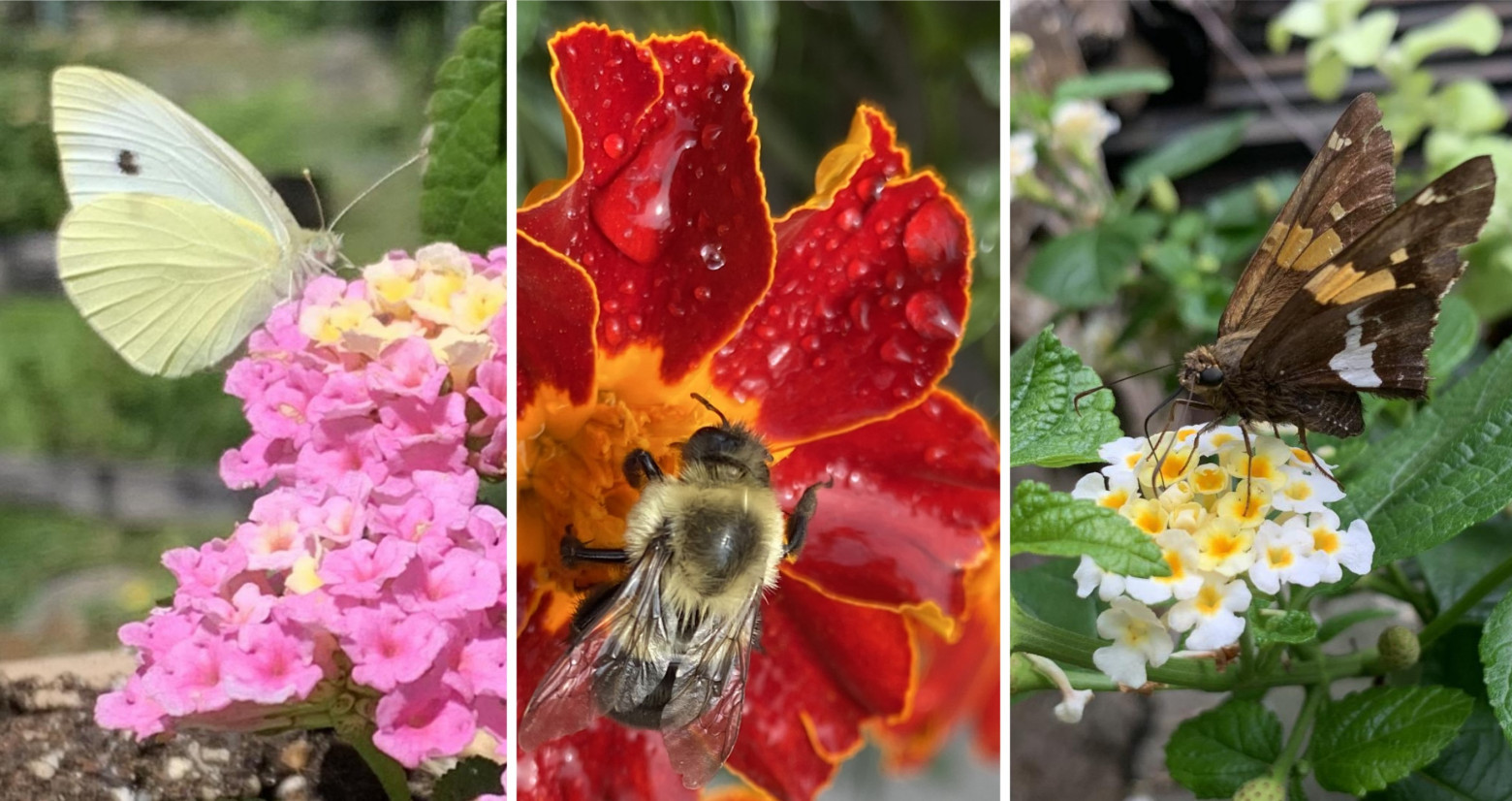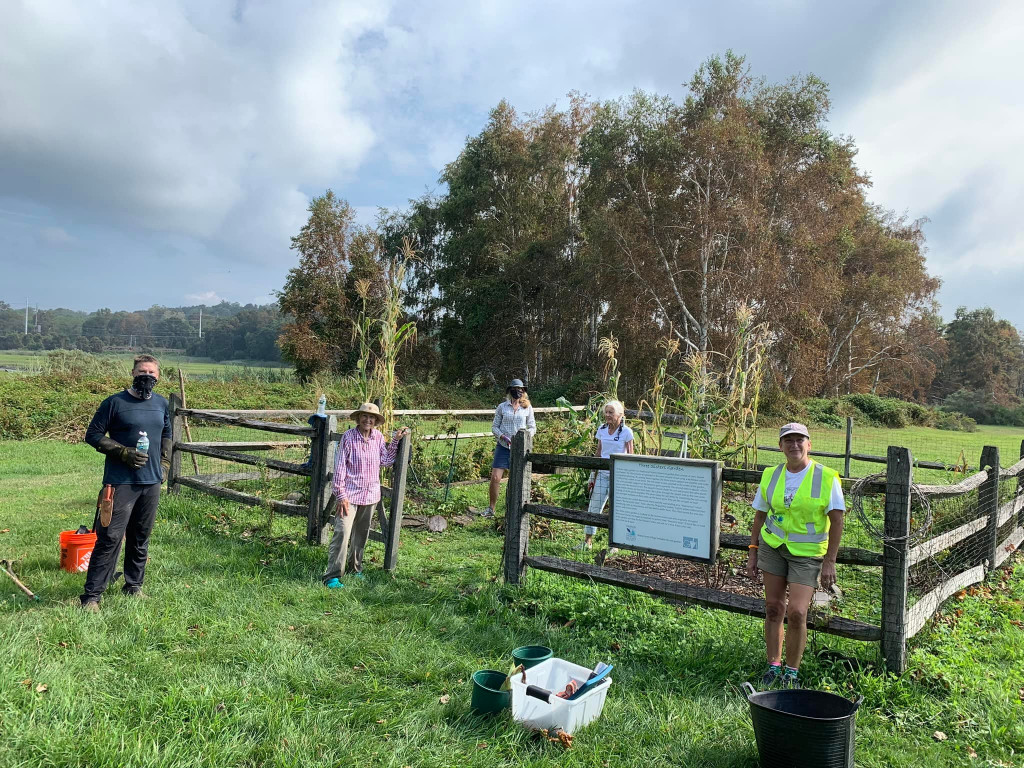
(Pamela Nobumoto)

(Pamela Nobumoto)
CONNECTICUT — Pollinator populations are declining due to human development and climate change, experts say. But Connecticut gardeners are working to save them.
Globally, over 40% of insect species are declining in population. Their disappearance is happening faster than plant or bird populations. The main threat is habitat loss created by expanding agricultural fields, followed by chemical pollution, according to a 2019 study.
“Many towns, and most farmers, are using very potent chemicals to kill off insects to protect their crops…but there’s been a real neglect of the reality that those chemicals are toxic to the small insects that need to pollinate things, so there’s nothing left to do the pollinating,” says Jackie Algon, co-founder and current board member of Pollinator Pathway.
Pollinator Pathway, an organization founded in Wilton, Connecticut in 2017, seeks to combat the issues that pollinators and their habitats face. Their aim is to create North-to-South migration corridors across North America by planting pollinator-friendly gardens with native plants, and to stop the use of pesticides. Individuals or groups can register their gardens or even flower boxes as official Pollinator Gardens. The organization now has pathways in over 350 towns in 13 states, most in the Northeast, as well as one in Ontario, Canada. Just this year, it was registered as a 501(c)(3) organization.
The original pollinator pathway was conceptualized and founded by artist Sarah Bergmann in 2007, and her concept inspired the Pollinator Pathway organization, according to their website. Bergmann’s goal was to connect two green pieces of land in Seattle’s urban landscape by planting along sidewalks and in other underutilized areas, according to her website.
Last spring, a group of Mansfield residents registered the township with Pollinator Pathway. The process started with Mansfield’s sustainability committee successfully passing a resolution that declared the town a “Pollinator-Friendly Community” in early 2020. Due to this resolution, getting municipal approval to build and maintain pollinator gardens became easier, and helped with getting Pollinator Pathway on board with the group’s proposed garden, according to Melissa Sheardwright. A private-practice psychologist by day, Sheardwright handles outreach in the Mansfield chapter of Pollinator Pathway.
Mansfield and Wilton show the successes of local sustainability advocacy, however, both towns are suburban areas surrounded by woodland. Migratory species, which Pollinator Pathway focuses on, are most affected by habitat loss caused by urbanization and suburbanization. This is why the end goal of the organization is to create stretches of pollinator-friendly land in both urban and rural areas. Without adequate “pit stops,” the pollinators cannot survive the trip.
Monarch butterfly populations in North America have decreased by more than 90% over the last two decades, according to the National Wildlife Foundation. The areas in which the migratory butterflies seek food and rest are disappearing, taking monarch populations with them. This is caused not only by urban/suburbanization, but also by global warming, which shifts the seasons and throws off the growing cycles of many organisms. This causes the species that rely on each other to fall out of sync, affecting food and shelter availability.
“The insects’ life cycles are now out of sync with the birds’ hatching cycles or with the trees’ leafing out cycles, so nature is confused,” said Algon.
Monarchs are just one example of the many pollinators whose numbers have been decimated. Bees, flies, bats, birds, and other organisms also face migration and habitat issues. Bees are a quintessential example, but most people mistakenly think of honeybees as the main pollinators.
“Honeybees are not native bees…they do a lot of important pollinating, especially for farmers, but 40% of the pollinating that gets done is done by what’s called ‘solitary bees.’ People spray their yards with pesticides to get rid of them, but they can’t sting you,” said Algon.
It’s important to restore plant life to developed areas. But supporting pollinators doesn’t just call for more greenery. The pathways must comprise native plant species that pollinators rely on.
Algon’s first brush with native plant species and habitat protection came when she moved to Wilton with her husband. She wanted to plant some colorful bushes on their property, but the landscape architect told her that part of the property is on wetlands, and those bushes were invasive. “At that moment, I realized that I was dangerous to the ecology because I didn’t know anything,” she said.
This lack of knowledge is all too common. Many of the most popular plants sold in traditional garden centers are non-native. Forsythia, for example, looks beautiful in a garden, but “it’s not native and it doesn’t feed the insects,” Sheardwright said.
According to the Pennsylvania Department of Conservation and Natural Resources (PADCNR), invasive plants usually are species that can survive in many conditions, and that rapidly grow and reproduce. This allows them to crowd out native species, especially since invasive plants have few natural predators in the new areas. Moreover, invasives directly affect pollinator reproduction. Garlic mustard, a widespread invasive species, attracts monarch butterflies, who lay their eggs on the plant. But the plant does not provide adequate nutrition for the emerging caterpillars, causing them to die off or grow improperly.
Invasive species have cost the United States an average of $26 billion annually in the 2010’s, according to a 2021 study. This is a substantial rise from the $2 billion per year spent in the early 1960’s.
“[Invasives often] have multiple seeds that spawn more than our natives do, so they take over easily,” said Pamela Nobumoto, a resident of Wilton and frequent collaborator with Pollinator Pathway. A stay-at-home mom, she started gardening as a hobby. But she has since turned it into her passion. She was certified as an “Advanced Master Gardener” through UConn Extension, a program offered by the College of Agriculture, Health, and Natural Resources.

Much of her work involves restoring the dunes and native grass at the beach on Sherwood Island in Westport, Conn., for which she has applied for and received multiple grants. She has also planted pollinator gardens on the island and in Wilton.
As a result, she has seen a dramatic increase in the numbers and types of pollinators that visit the area. “A lot of the things I put in are like magnets for butterflies, bees [and] hummingbirds.”
In addition to planting gardens, Pollinator Pathway places a heavy emphasis on educating people about the environment around them. One of the main goals of the founders was “making people aware of what they could do,” said Algon.
Making your yard pollinator-friendly doesn’t necessarily mean ripping up your grass lawn and planting trees and bushes. Sometimes, it can be as simple as not mowing as often. Algon has seen people do this in her neighborhood. “We encourage people to embrace dandelions, and to love clover; if you let them just grow, they will provide a great food source and some habitat.”
As a result, lawns would require less maintenance. “The less you do, by taking out more of your lawn, by converting it into little meadows or garden beds…the less you have to do.”
Sheardwright and Nobumoto also emphasized the importance of educating community members about native species and pollinators. Sheardwright described her work as “neighbor education”. Nobumoto sometimes works at a plant clinic, wherein people can bring in plants to identify or treat for diseases. She said that gardening is a community.
“It’s a lot of sharing knowledge; it’s not just [for] yourself, but helping others.”